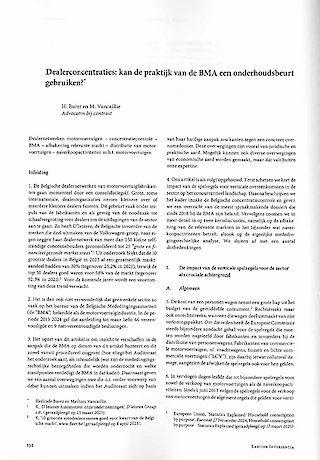In the Picture

Show me (some of) the money!
September 2017Imagine…
This afternoon you will receive a printout with the monthly listing of your company’s debtors.
You know where this always ends: after a few fruitless reminders, a robust notice of default and then a reality check, you quickly drop plans to bring proceedings against your debtors.
Certainly for debtors abroad, the cost-benefit analysis of bringing proceedings is systematically to your disadvantage … A long trial, unforeseen attorney fees and possibly an insolvent debtor at the end of the ride: it doesn’t seem worthwhile for all but a limited number of invoices.
You consult the legal department and to your surprise, people there are more optimistic. An EPO is advised and in the meantime an EAPO is also possible. You have no idea what they are talking about …
A brief clarification.
In recent years, the EU has launched several alternative procedures to simplify the resolution of cross-border disputes. These alternative procedures are usually simpler and less expensive than traditional legal proceedings, because they are in writing and use standard forms. The purpose of these procedures is to promote cross-border trade.
Since 2009, companies and consumers can use the European small claims procedure. This procedure was updated and – hopefully – revived on 14 July 2017 by Regulation (EU) 2015/2421. The procedure allows parties located in different EU Member States to settle (most) civil and commercial disputes with a value of up to € 5,000 (excluding interest and costs).
To this end, the claimant must submit a standard claim form together with the supporting documents (the agreement, correspondence, etc.) to the (registry of the) competent court and pay the register duties. Depending on the EU Member State, the competent court and the value, this amount is usually between € 30 and € 100. If the claim is found to be admissible, the court will forward the form to the respondent, who has 30 days to submit a written defence (or counterclaim). In exceptional cases, a (remote) hearing can be organized. If the court decides that it has sufficient information, it will pronounce a judgement within 30 days based on the documents of the claimant and respondent. Then the winning party, with limited formalities, may proceed with enforcing the judgement in the respondent’s country.
If it concerns a cross-border, undisputed monetary claim (e.g. a non-contested invoice), the European Payment Order Procedure (“EPO”) is a good alternative to a classical procedure. Unlike the small claims procedure, only (undisputed) financial claims are eligible for the EPO. The value of the claim is not limited in this case. In substance, the procedures are comparable. After the submission of a standard form, the court investigates whether the EPO request is admissible and well-founded. In the absence of a timely defence by the debtor, the issued EPO is immediately enforceable.
Early this year, Regulation (EU) 655/2014 introduced a further procedure to make it easier for creditors to impose seizure before judgement on foreign banking accounts in the case of cross-border transactions (the so-called European Account Preservation Order, ‘EAPO’). This procedure, which is carried out without the debtor, can already be initiated before proceedings on the merits, but also during or after such proceedings. The courts of the EU Member State that decide on the substance of the case are also competent for the EAPO.
In order to obtain the seizure before judgement on a bank account abroad via an EAPO, the creditor must prove that recovery of its claim is impossible or complicated without such a seizure. If a judgement on the merits has not yet been pronounced, the creditor must also convince the court that the claim against the debtor is likely to be well-founded. To prevent abuse of the EAPO, the court may request a security deposit from the creditor. Finally, if the creditor has already obtained a judgement but does not know where the debtor maintains it bank accounts, the EAPO procedure provides for a mechanism to request information about the debtor’s foreign bank accounts.
Concretely:
- An important condition for using the small claims and EPO procedures is that the parties must be located in different EU Member States. For an EAPO, it can be sufficient that the debtor has a bank account in a different EU Member State. In some cases, this cross-border character may require translations, which can result in additional costs.
- Keep in mind the competent forum: territorial (which EU Member State and which location) as well as material (which court). For disputes between companies, the competent court will often be determined in general terms and conditions. Otherwise, the statutory jurisdiction rules (established in EU and national legislation) apply.
- If a lawyer submits a small claim or EPO request, in Belgium he can claim a minimum contribution for legal costs, as prescribed by law. In addition to the principal amount, interest (according to the Payment Arrears Act) and the application of a lump sum penalty (up to 10% of the principal amount, min. € 40 max. € 2,500) can also be claimed.
- An EAPO may be useful, but it is dangerous to use it as a means to exert pressure. An unlawful seizure can lead to damage compensation being owed.
- Not all EU Member States participate: a small claims procedure or an EPO cannot be used for disputes in Denmark. An EAPO cannot be requested on a Danish or British bank account.
Want to know more?
- The new small claims regulation can be found at http://eur-lex.europa.eu/legal-content/EN/TXT/?uri=CELEX:32014R0655. The EPO and EAPO regulations can be consulted at http://eur-lex.europa.eu/legal-content/EN/TXT/?uri=CELEX:32006R1896 and http://eur-lex.europa.eu/legal-content/EN/TXT/?uri=CELEX:32014R0655.
- All small claims, EPO and EAPO forms are available on the European e-Justice Portal: https://e-justice.europa.eu/content_dynamic_forms-155-en.do.











